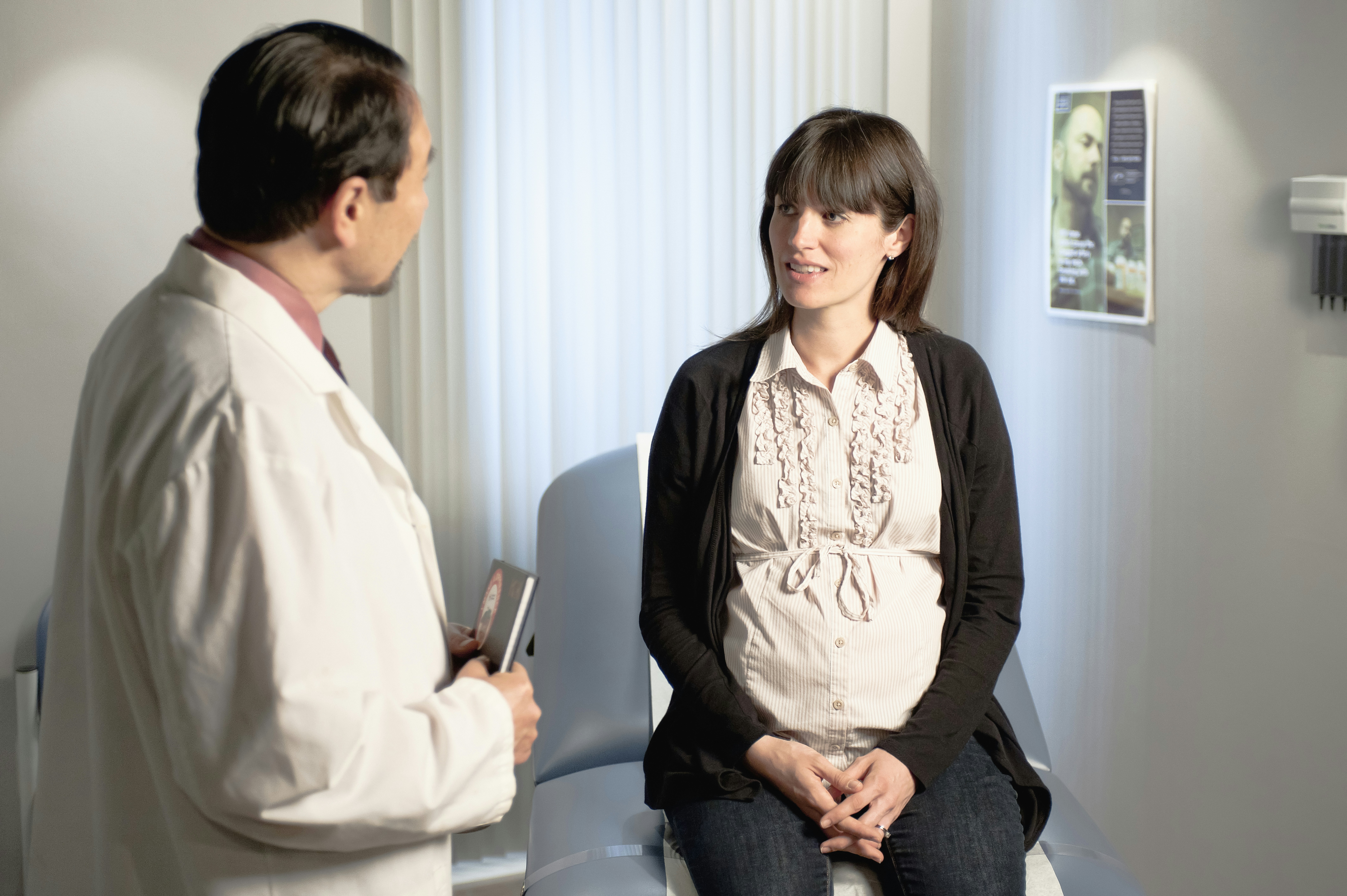Endometriosis is a chronic condition where tissue similar to the uterine lining grows outside the uterus, leading to painful and sometimes debilitating menstrual symptoms. Women with endometriosis may experience pelvic pain, heavy menstrual bleeding, and hormonal imbalances that disrupt daily life and emotional well-being. This article provides an overview of endometriosis, emphasizing its impact on the menstrual cycle, common symptoms, diagnostic methods, treatment options, and effects on fertility. Dr. Rachel, an endometriosis specialist, highlights the importance of early and accurate diagnosis to achieve effective management. The article also dispels common myths, explains evidence-based therapies, and offers insights into lifestyle changes and support resources to help improve quality of life.
Key Takeaways
- Endometriosis involves tissue growth outside the uterus, causing significant menstrual disruption.
- Common symptoms include pelvic pain, heavy bleeding, fatigue, and back pain.
- Diagnosis typically requires multiple tests, with laparoscopy as the gold standard.
- Treatments include medications, surgery, and lifestyle modifications.
- Endometriosis can affect fertility, but effective treatments and support are available.
What Is Endometriosis and How Does It Affect the Menstrual Cycle?

Endometriosis is a condition in which tissue similar to the endometrium grows outside the uterus. This tissue still responds to hormonal changes during the menstrual cycle, causing chronic inflammation and hormonal imbalances. As a result, the normal shedding process of the uterine lining is disrupted, leading to irregular bleeding and pain. The ectopic tissue, lacking an exit route, causes localized bleeding, inflammation, and eventually scar tissue formation, which further disturbs the menstrual cycle.
What Causes Endometriosis and Who Is at Risk?
The exact cause of endometriosis remains unclear, but theories suggest that retrograde menstruation—where menstrual blood flows backward into the pelvic cavity—may contribute. Genetic predisposition, immune system dysfunction, and environmental factors are also believed to play a role. Women with a family history of endometriosis, early menstruation onset, or who have never given birth are at higher risk. Exposure to certain environmental toxins and immune disorders may further increase the likelihood of developing the condition.
How Does Endometriosis Disrupt the Menstrual Cycle and Hormone Balance?
Endometriosis disrupts the menstrual cycle by causing irregular bleeding and pelvic pain. The ectopic tissue reacts to fluctuations in estrogen just as the uterine lining does, triggering cyclical inflammation. This constant state of inflammation interferes with hormonal signaling, often resulting in increased estrogen production and reduced progesterone responsiveness. These imbalances not only worsen menstrual symptoms but can also lead to systemic effects such as mood disturbances and fatigue.
Which Reproductive Organs Are Affected by Endometriosis?
Most commonly, endometriosis affects reproductive organs such as the ovaries, fallopian tubes, and the outer surface of the uterus. It may also involve the peritoneum, ligaments supporting the uterus, and sometimes the bladder or intestines. The abnormal tissue growth can result in adhesions and scar tissue formation. These changes not only cause pain but can also impair ovarian function and, over time, affect fertility.
What Are the Common Menstrual Symptoms Caused by Endometriosis?

Endometriosis is known for causing a range of menstrual symptoms that go beyond typical period discomfort. Many women experience painful menstruation (dysmenorrhea), heavy menstrual bleeding (menorrhagia), and irregular cycles. Symptoms often intensify just before and during menstruation, severely disrupting daily activities. Along with severe pelvic pain, systemic issues like chronic fatigue, back pain, and gastrointestinal disturbances are common, significantly impacting overall quality of life.
How Does Endometriosis Cause Pelvic Pain and Painful Periods?
The primary cause of pelvic pain in endometriosis is the inflammation resulting from tissue that continues to bleed each cycle. This bleeding triggers an inflammatory reaction that irritates nerves and causes cramping. Over time, repeated episodes lead to the formation of scar tissue or adhesions that pull on surrounding tissues and organs, intensifying the pain during menstruation.
What Is the Relationship Between Endometriosis and Heavy Menstrual Bleeding?
Heavy menstrual bleeding in those with endometriosis occurs due to the abnormal shedding of both normal and ectopic endometrial tissue. The disorganized and uncontrolled growth of this tissue leads to significant blood loss. Inflammatory changes in the uterine lining can also disrupt the normal coagulation process, causing prolonged periods, frequent sanitary product changes, and in some cases, anemia.
Are There Other Menstrual Symptoms Linked to Endometriosis, Such as Fatigue or Back Pain?
Beyond pelvic pain and heavy bleeding, endometriosis can cause additional symptoms. Chronic fatigue is often reported, likely due to ongoing inflammation and pain. Back pain, resulting from scar tissue causing tension and misalignment in the lower back, is also common. Gastrointestinal symptoms such as bloating, constipation, and diarrhea may occur around menstruation. These symptoms underscore the systemic nature of endometriosis and the need for a holistic treatment approach.
How Is Endometriosis Diagnosed?

Diagnosing endometriosis requires a combination of different methods because its symptoms often overlap with other conditions. A detailed medical history and physical examination are usually followed by imaging tests. While transvaginal ultrasound and MRI can provide clues, they may not detect all types of lesions. Ultimately, laparoscopy—a minimally invasive surgical procedure—is considered the definitive method for diagnosis as it allows direct visualization and biopsy of abnormal tissue.
What Diagnostic Tests Are Used to Detect Endometriosis?
Doctors begin the diagnostic process with a comprehensive medical history and physical examination. Transvaginal ultrasound is frequently used to detect ovarian cysts (endometriomas) and other pelvic abnormalities. When results are inconclusive, an MRI may be performed to offer a detailed view of the pelvic region. Blood tests checking for inflammatory markers and hormone levels can sometimes support the diagnosis, but they are not definitive on their own. Laparoscopy remains necessary to confirm the diagnosis with visual inspection and tissue sampling.
Why Is Laparoscopy Considered the Gold Standard for Diagnosis?
Laparoscopy is regarded as the gold standard for diagnosing endometriosis because it allows direct observation of the lesions. During the procedure, surgeons can identify endometrial implants, adhesions, and scar tissue. They may also perform a biopsy to confirm the diagnosis at a cellular level. This method not only clarifies the extent of the disease but also offers an opportunity to treat the lesions immediately, thereby reducing diagnostic uncertainty and guiding effective treatment.
How Long Does the Diagnosis Process Usually Take and Why Is It Often Delayed?
The path to a definitive diagnosis of endometriosis is often long and challenging. Many women experience years of symptoms before obtaining an accurate diagnosis. Delays are commonly due to the variability of symptoms and their similarity to normal menstrual pain. In addition, reliance on invasive techniques like laparoscopy, coupled with the current lack of highly sensitive non-invasive tests, contributes to prolonged diagnostic timelines. Early recognition remains critical to managing the condition effectively.
What Treatment Options Are Available for Managing Endometriosis Symptoms?

Treatment for endometriosis is tailored to the severity of symptoms, disease extent, and the patient’s reproductive goals. Options include medical therapies to manage hormonal levels, surgical interventions to remove lesions, and lifestyle modifications to reduce inflammation and pain. The choice of treatment is often influenced by the need for pain relief and fertility preservation.
How Do Medications Help Relieve Endometriosis-Related Menstrual Symptoms?
Medications used in endometriosis aim to rebalance hormones and reduce inflammation. Nonsteroidal anti-inflammatory drugs (NSAIDs) are commonly prescribed to alleviate pain by targeting inflammation. Hormonal therapies—including combined oral contraceptive pills, progestins, and gonadotropin-releasing hormone (GnRH) agonists—work by suppressing ovulation and maintaining lower estrogen levels. This reduction in estrogen limits the stimulation of endometrial tissue, helping to control symptoms like cramping and heavy bleeding.
When Is Surgery Recommended and What Does It Involve?
Surgical treatment is recommended when medical therapies cannot adequately control symptoms or if there is significant anatomical distortion affecting fertility. Laparoscopy is the most common surgical approach, allowing for the removal or ablation of endometrial lesions, excision of ovarian cysts, and separation of adhesions. Surgery not only aims to provide pain relief but also to improve fertility prospects. Often, post-operative hormonal therapy is used to reduce the risk of recurrence.
What Lifestyle Changes Can Support Symptom Management?
Lifestyle changes can play a supportive role in managing endometriosis. Many women benefit from an anti-inflammatory diet rich in fruits, vegetables, whole grains, and omega-3 fatty acids, which may help lower overall inflammation. Regular exercise, including activities such as yoga and aerobic workouts, can improve overall fitness and reduce stress. Stress management techniques like mindfulness and cognitive behavioral therapy further help in alleviating both physical and emotional symptoms. Maintaining a healthy weight is also important, as excess weight can increase estrogen levels.
How Does Endometriosis Impact Fertility and What Are the Implications?

Endometriosis can interfere with fertility by causing anatomical disruptions and creating an inflammatory environment that hampers normal reproductive functions. Growths or adhesions may block the fallopian tubes or distort pelvic anatomy, reducing the chances of an egg meeting sperm. Additionally, the inflammatory state can degrade egg quality and disrupt implantation, making it more difficult to achieve a successful pregnancy. Many women with endometriosis face challenges with fertility and may require specialized treatments.
How Can Endometriosis Cause Infertility?
The formation of adhesions and scar tissue can alter the pelvic environment, impeding the movement of eggs from the ovaries to the fallopian tubes. The persistent inflammation may also affect the quality of eggs and sperm function. Hormonal imbalances can render the uterine lining less receptive to implantation. These factors combine to reduce pregnancy rates, particularly in women with moderate to severe disease.
What Fertility Treatments Are Available for Women With Endometriosis?
Fertility treatments vary depending on the severity of endometriosis and the individual’s fertility goals. For mild cases, ovulation induction combined with intrauterine insemination (IUI) may be effective. In more advanced cases, in vitro fertilization (IVF) is often recommended as it bypasses potential pelvic blockages and inflammatory barriers. Surgical removal of lesions can also help restore normal anatomy and improve the chances of conception. A multidisciplinary approach involving both surgery and assisted reproductive technologies typically offers the best outcomes.
Can Managing Menstrual Symptoms Improve Fertility Outcomes?
Yes, properly managing menstrual symptoms can create a healthier pelvic environment and improve fertility outcomes. By reducing pelvic inflammation and preventing the formation of adhesions through hormonal treatments and surgical interventions, the chances of a successful implantation are increased. Effective management of heavy bleeding and pain also contributes to overall better health, which can enhance the response to fertility treatments.
What Support and Resources Are Available for Living With Endometriosis?

Living with endometriosis can be challenging, but numerous support options exist. Both in-person and online support groups allow women to share experiences and gain practical advice on managing daily challenges. Specialized clinics run by experienced healthcare providers offer comprehensive care addressing both physical and emotional needs. Educational resources, including trusted websites and patient testimonials, provide information about treatment options and lifestyle adaptations. Access to multidisciplinary care ensures that patients receive personalized, balanced treatment for long-term management.
Where Can Patients Find Support Groups and Specialist Care?
Patients can locate support through hospital-based endometriosis clinics, nonprofit organizations, and online communities. Social media groups, webinars, and local meetups also serve as valuable networks. These resources offer emotional reassurance and practical tips, helping patients tackle day-to-day challenges and feel less isolated.
What Coping Strategies Help Improve Quality of Life During Menstruation?
Effective coping strategies combine medical treatment with lifestyle changes. Regular exercise, a balanced anti-inflammatory diet, proper sleep, and stress-reduction techniques like yoga and meditation can significantly alleviate symptoms. Complementary therapies such as acupuncture and heat therapy may also relieve pain. Together, these strategies help manage symptom intensity, improve overall well-being, and enhance quality of life during menstruation.
How Do Patient Stories and Testimonials Provide Insight and Encouragement?
Patient stories and testimonials serve as powerful reminders that effective management is possible. Hearing how others have overcome challenges can inspire hope and motivate patients to seek appropriate treatment. These shared experiences demystify the condition, reduce stigma, and provide practical tips on navigating both medical and lifestyle decisions.
Frequently Asked Questions
What Is Endometriosis and How Common Is It?
Endometriosis is a condition where tissue similar to the uterine lining grows outside the uterus. It affects approximately 10% of women of reproductive age and can cause pelvic pain and heavy bleeding. Improved diagnostic methods are helping more women receive timely care.
What Are the Main Symptoms to Watch For?
The main symptoms include painful periods, chronic pelvic pain, heavy menstrual bleeding, fatigue, and back pain. Some women may also experience gastrointestinal disturbances and painful intercourse. Early recognition of these symptoms is crucial.
How Is Endometriosis Diagnosed and Treated?
Diagnosis involves a combination of a detailed medical history, physical examination, and imaging tests, with laparoscopy as the definitive method. Treatments range from NSAIDs and hormonal therapies to surgical procedures and lifestyle modifications, based on individual needs.
Can Endometriosis Cause Heavy Bleeding and Severe Pain?
Yes, heavy bleeding and severe pelvic pain are common symptoms. Abnormal tissue growth leads to inflammation and irregular shedding, which results in significant pain and blood loss. Management usually includes a mix of medications, surgery, and lifestyle changes.
Is Infertility Always Caused by Endometriosis?
Endometriosis can impair fertility by distorting pelvic anatomy and creating an inflammatory environment. However, it is not the sole cause of infertility. Many women conceive naturally or with fertility treatments, based on a comprehensive evaluation.
Conclusion
Endometriosis significantly affects the menstrual cycle by causing pain, heavy bleeding, and hormonal imbalances that disrupt daily life. Women experiencing these symptoms should seek prompt diagnosis and comprehensive treatment from specialists familiar with the condition. Management involves a multidisciplinary approach that includes medications, surgery, and lifestyle modifications to improve quality of life and fertility outcomes. With ongoing support and access to effective treatments, affected individuals can better manage both physical and emotional aspects of the condition and look forward to a healthier future.

